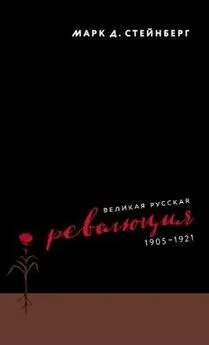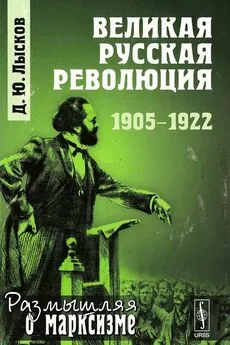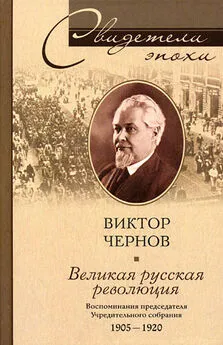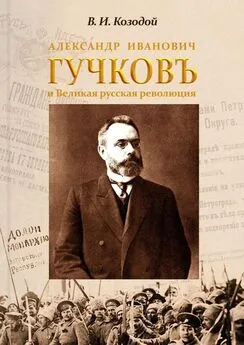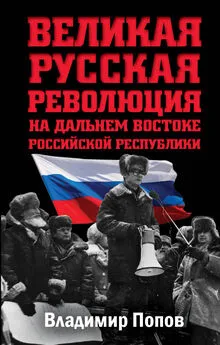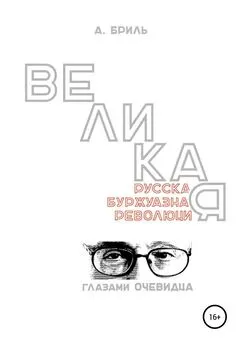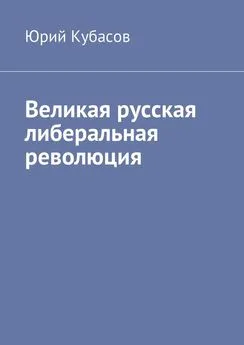Марк Стейнберг - Великая русская революция, 1905–1921
- Название:Великая русская революция, 1905–1921
- Автор:
- Жанр:
- Издательство:Литагент ИЭП им.Гайдара
- Год:2018
- Город:Москва
- ISBN:978-5-93255-520-0
- Рейтинг:
- Избранное:Добавить в избранное
-
Отзывы:
-
Ваша оценка:
Марк Стейнберг - Великая русская революция, 1905–1921 краткое содержание
Автор книги, написанной как для исследователей, так и для широкого круга читателей, обращается к текстам и голосам той эпохи, стремясь оживить прошлое и наполнявшие его смыслы. Это – рассказ о времени, полном драматизма и неопределенности, и в первую очередь – рассказ о человеческих ценностях, чувствах, желаниях и разочарованиях, придающих истории значение в глазах ее очевидцев.
Великая русская революция, 1905–1921 - читать онлайн бесплатно ознакомительный отрывок
Интервал:
Закладка:
393
New York Times , 3.03.1921, 1. Этот перл цитируют многие историки, сомневаясь, впрочем, в его подлинности.
394
А. Вышинский. Уроки одной конференции // Правда. 8.02.1921. С. 1.
395
Figes, A People’s Tragedy , 758–760.
396
Aves, Workers Against Lenin, 186–187 и passim.
397
Дан. Два года скитаний. С. ш.
398
Cathy A. Frierson, Peasant Icons: Representations of Rural People in Late Nineteenth-Century Russia (Oxford, 1993).
399
Mark D. Steinberg and Vladimir M. Khrustalev, The Fall of the Romanovs: Political Dreams and Personal Struggles in a Time of Revolution (New Haven, 1995), 16–23 (приводятся слова Николая II).
400
Статистический ежегодник России, 1914. Пг., 1915. С. 1.
401
Примеры работ на английском включают: Ben Eklof, Russian Peasant Schools: Officialdom, Village Culture, and Popular Pedagogy, 1861–1914 (Berkeley, CA, 1986); Ben Eklof and Stephen Frank (eds), The World of the Russian Peasant: Post-Emancipation Culture and Society (Boston, 1990); Esther Kingston-Mann and Timothy Mixter (eds), Peasant Economy, Culture, and Politics of European Russia, 1800–1921 (Princeton, 1991); Christine Worobec, Peasant Russia: Family and Community in the Post-Emancipation Period (Princeton, 1991); Stephen Frank and Mark Steinberg (eds), Cultures in Flux: Lower Class Values, Practices and Resistance in Late Imperial Russia (Princeton, 1994), 34–53; Jeffrey Burds, Peasant Dreams and Market Politics: Labor Migration and the Russian Village, 1861–1905 (Pittsburgh, PA, 1998); Stephen Frank, Crime, Cultural Conflict, and Justice in Rural Russia, 1856–1914 (Berkeley, CA, 1999); David Moon, The Russian Peasantry, 1600–1930: The World the Peasants Made (London, 1999); Boris Mironov (with Ben Eklof), The Social History of Imperial Russia, 1700–1917 (Boulder, CO, 2000); Chris Chulos, Converging Worlds: Religion and Community in Peasant Russia, 1861–1917 (DeKalb, IL, 2003); Jane Burbank, Russian Peasants Go to Court: Legal Culture in the Countryside, 1905–1917 (Bloomington, IN, 2004); Corinne Gaudin, Ruling Peasants: Village and State in Late Imperial Russia (DeKalb, IL, 2007); S. A. Smith, “‘Moral Economy’ and Peasant Revolution in Russia, 1861–1918,” Revolutionary Russia, 24/2 (December 2011): 143–71; Christine D. Worobec, “Russian Peasant Women’s Culture: Three Voices,” in Wendy Rosslyn and Alessandra Tosi (eds), Women in Nineteenth-Century Russia: Lives and Culture (Cambridge, 2012), особ. p. 43–4.
402
См. примеры в переводе на английский в: Olga Т. Yokoyama, Russian Peasant Letters: Life and Times of a Nineteenth-Century Family (Wiesbaden, 2010).
403
Самыми известными из них, особенно в переводе, являются мемуары Семена Канатчикова. См.: Reginald Zelnik (ed.), A Radical Worker in Tsarist Russia: The Autobiography of Semen Ivanovich Kanatchikov (Stanford, CA, 1986).
404
В первую очередь – Barbara Alpern Engel and Anastasia Posadskaya-Venderbeck (eds), A Revolution of their own: Voices of Women in Soviet History (Boulder, CO, 1998).
405
Особ, см.: Joan Wallach Scott, Gender and the Politics of History (New York, 1988); Barbara Alpern Engel, Women in Russia, 1700–2000 (Cambridge, 2004), введение.
406
Вл. Б. О деревенских праздниках//Новое время. 30.04.1903. С. 4. См. также: Stephen Frank, “Confronting the Domestic Other: Rural Popular Culture and its Enemies in Finde-Siecle Russia,” in Frank and Steinberg, Cultures in Flux, 74-107; Frierson, Peasant Icons, chs. 6–7.
407
М. Анчарова. Женщины и учредительное собран не//Женское дело. 1.05.1917. С. 1 (цит. в обратном переводе).
408
А. У. О крестьянах и о зем ле // Работница. 14.06.1917. C.3.
409
Frierson, Peasant Icons, ch. 8.
410
Помимо работ, уже упомянутых в данной главе, см. также: David A. J. Macey, Government and Peasant in Russia, 1861–1906 (DeKalb, IL, 1987); Roger Bartlett (ed.), Land Commune and Peasant Community in Russia (London, 1990); Judith Pallot, Land Reform in Russia, 1906–1917: Peasant Responses to Stolypin’s Project of Rural Transformation (Oxford, 1999); David Kerans, Mind and Labor on the Farm in Black-Earth Russia, 1861–1914 (Budapest, 2001).
411
Worobec, Peasant Russia ; Rose Glickman, Russian Factory Women: Workplace and Society (Berkeley, CA, 1984), eh. 2; Beatrice Farnsworth and Lynn Viola (eds), Russian Peasant Women (New York, 1992); Barbara Alpern Engel, Between Fields and the City: Women, Work, and Family in Russia, 1861–1914 (Cambridge, 1995), ch. 1; Engel, Breaking the Ties that Bound; The Politics of Marital Strife in Late Imperial Russia (Ithaca, NY, 2011), особ. ch. 4.
412
Christine Worobec, “Victims or Actors? Russian Peasant Women and Patriarchy,” in Kingston-Mann and Mixter, Peasant Economy, Culture, and Politics, 177–206.
413
О грамотности, образовании и чтении см.: Jeffrey Brooks, When Russia Learned to Read: Literacy and Popular Culture, 1861–1917 (Princeton, 1985), ch. 1; Eklof, Russian Peasant Schools', А. Г. Рашин. Население России за 100 лет (. 1811–1919 ): статистический очерк. М., 1956; Первая всеобщая перепись населения Российской Империи 1897 г . Т. XXIV: Московская губерния. СПб., 1905; Численность и состав рабочих в России на основании данных первой всеобщей переписи населения Российской Империи 1897 г. СПб., 1906.
414
Цит. из статьи Жбанкова в медицинском журнале «Врач» (1895) в: Jeffrey Burds, “The Social Control of Peasant Labor in Russia,” in Kingston-Mann and Mixter., Peasant Economy, Culture, and Politics, 55.
415
Zelnik (ed.), A Radical Worker in Tsarist Russia , 1–8.
416
Engel, Between Fields and the City , 117-25.
417
Е. A. Oliunina, “The Tailoring Trade in Moscow and the Villages of Moscow and Riazan Provinces: Material on the History of the Domestic Industry in Russia,” in Victoria Bonnell (ed.), The Russian Worker: Life and Labor under the Tsarist Regime (Berkeley, CA, 1983), 172.
418
Цит. в: Engel, Between Fields and the City , 82.
419
Ibid. 41–53.
420
Помимо источников, называвшихся в этой главе, см.: Robert Rothstein, “Death of the Folk Song?” in Frank and Steinberg, Cultures in Flux, 108-20; Eklof, Russian Peasant Schools’, Jeffrey Burds, Peasant Dreams', Jane Burbank, Russian Peasants Go to Court.
421
Обзор истории крестьянского сопротивления и протестов, особенно до 1905 г., см. в: Moon, Russian Peasantry, ch. 7.
422
Это выражение позаимствовано из: James С. Scott, Weapons of the Weak: Everyday Forms of Peasant Resistance (New Haven, 1985).
423
Barbara Alpern Engel, “Women, Men, and Languages of Peasant Resistance, 1870–1907,” in Frank and Steinberg, Cultures in Flux, 34, 37–43; Robin Bisha, Jehanne Gheith, Christine Holden, and William Wagner (eds), Russian Women, 1698–1917: Experience and Expression: An Anthology of Sources (Blooming-ton, in, 2002), 339-43-
424
Дальнейшее изложение основывается в первую очередь на: Abraham Ascher, The Revolution of igод, i. Russia in Disarray (Stanford, CA, 1988), 161-4; ii. Authority Restored (Stanford, CA, 1992), 111-28; Maureen Perrie, “The Russian Peasant Movement in 1905-7,” in Eklof and Frank, World of the Russian Peasant, 193–218. Из недавних работ см.: Burton Richard Miller, Rural Unrest during the First Russian Revolution: Kursk Province, 1905–1906 (Budapest, 2013).
425
Аграрное движение в России в 1905–1906 гг. (СПб., 1908), цит. по: Engel, “Women, Men, and Languages of Peasant Resistance,” 45m; Perrie, “Russian Peasant Movement,” 208.
426
Engel, “Women, Men, and Languages of Peasant Resistance,” 44–50; Perrie, “Russian Peasant Movement,” 208.
427
Секретное донесение орловского губернатора 5 августа 1906 г. в департамент полиции // 1905: Материалы и документы. Аграрное движение в 1905–1907 гг. Т. \/под ред. С. Дубровского и Б. Граве. М., 1925. С. 216–218.
428
Там же. С. 344.
429
Andrew Verner, “Discursive Strategies in the 1905 Revolution: Peasant Petitions from Vladimir Province,” Russian Review, 54/1 (January 1995): 65–90 (цитаты на p. 69, 88); Abraham Ascher, The Revolution of1905, ii. 199-22; Gregory Freeze, From Supplication to Revolution: A Documentary Social History of Imperial Russia (Oxford, 1988), 274-85.
430
Цит. по: Freeze, From Supplication to Revolution , 281-2.
431
Цит. no: Ascher, The Revolution of 1905, ii. 120.
432
Цит. по: Perrie, Russian Peasant Movement , 208.
433
Engel, Women, Men, and Languages of Peasant Resistance, 44–50.
434
Цит. в ibid. 50-1.
435
См., например: Corinne Gaudin, “Rural Echoes of World War I: War Talk in the Russian Village,” Jahrbilcherfar Geschichte Ost-europas , NS 56/3 (2008), 391–414; Mark Baker, “Rampaging Soldatki, Cowering Police, Bazaar Riots and Moral Economy: The Social Impact of the Great War in Kharkiv Province,” Canadian-American Slavic Studies, 35/2-3 (2001), 137-55.
Читать дальшеИнтервал:
Закладка:
